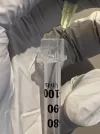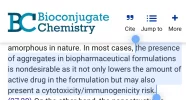Aggregates form when the peptide is in liquid form during manufacturing or after reconstitution.
After filtration, the peptide solution will be free of large aggregates. However, depending on the specific peptide, PH of the solution, concentration, and other factors, aggregates can reform. (ie 1 point of PH difference can speed up aggregate formation 10x in HGH).
So filtering as close to administration is ideal, since there's no "incubation" time for new aggregates to form.
Tesa is compound known to induce site reactions even in pharma formulations. After filtering into a new vial there was no site reaction during the first dose vs the painful unfiltered Tesa.
However, by the 3rd, 4th, and 5th daily doses pain gradually intensified, suggesting aggregates reformed.
By filtering each dose just before use, those injection site reactions are virtually eliminated, which suggests a lower level of immunogenicity, to maintain maximum efficacy.
Not every peptide is as prone to rapid aggregation so filtering into a vial may be fine. But we usually don't even know whether the PH of a peptide solution is correct. I just per dose filter them all now. I could do it blindfolded.
That said, I'm not wagging my finger at anyone saying you must do this. I've decided this is a low effort process I'm willing to use because of what my research into aggregation has shown me the benefits likely are.
Here's a little about "incubation" in a wonky paper about GLP aggregation I was reading earlier today.
View attachment 317276View attachment 317277





